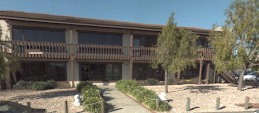 http://www.nytimes.com/2011/03/22/business/22geiger.html?_r=2
http://www.nytimes.com/2011/03/22/business/22geiger.html?_r=2Article Excerpt :
Many people buying the devices say they are worried about their food becoming contaminated. One customer, Mr. Flanegin said, was a theme park in Japan that wanted to check its food supplies as a precaution for its visitors.
Radiation detectors come as hand-held devices, wrist watches and pager-size gadgets that hang from the belt. Their cost varies from $150 for a self-assembled kit to $4,000 for a more sophisticated version that stores radiation readings along with the GPS coordinates of where those readings were taken.
Technically, Geiger counters are just one type of radiation detector. But many people use the term to describe all radiation detection equipment.
Law enforcement, fire departments, military, hospitals, scientific laboratories, schools and prospectors are the typical customers. Federal government agencies seem to be well enough stocked that they are not scrambling to buy more, according to the sellers interviewed.
Usually, the general public, other than a small group of hobbyists, has little interest in radiation.
But that changed after a devastating earthquake and tsunami set off Japan’s nuclear troubles. Demand for radiation detectors, along with potassium iodide pills, which can help prevent radiation-induced thyroid cancer, quickly outstripped supplies and the limited capacity to produce more.
Skepticism that the government will be forthcoming about radiation levels is driving some of the sales, said John Iovine, president of Images SI, a company in Staten Island that makes and sells Geiger counters and other scientific instruments.
“I never really felt it until people started calling up,” he said. “They want their own Geiger counter to check up.” Radiation levels in the United States remain within the normal range, according to the Environmental Protection Agency, which has a network of monitors across the country. Updates are available on the E.P.A.’s Web site.
During a typical week, Mr. Iovine says, he may get an order for 20 Geiger counters from a local government followed by several weeks without any additional sales. But in the week after the Japan earthquake, he said he received close to 200 orders and was now sold out. Customers are now warned that it will take six to eight weeks to fill any orders.
Still, buying a radiation detector is just the first step, Mr. Iovine said. Owners of the devices need to discern between dangerous radiation levels and a normal background reading.
“To use it is very simple,” Mr. Iovine said. “To interpret the results gets a little more difficult.”
Naturally occurring radiation varies depending on factors like local geology and altitude. People are exposed to additional radiation when they get an X-ray or fly in an airplane.
Robert Corsetti, director of sales and marketing for Berkeley Nucleonics, which makes and sells industrial-grade radiation detection equipment, said that calls to his company, which is based in San Rafael, Calif., increased up to 15 times the normal level after the problems started in Japan. In some cases, people are simply calling to ask if they are at risk, and not to buy something.
“We send out PowerPoints that dispel rumors,” Mr. Corsetti said. “I send the e-mail 20 times a day.” In one case, he said, an airline pilot who regularly flies to Tokyo wanted a detector to determine if he was being exposed to more radiation than usual. NBC News crew members in Japan are using radiation detectors from Berkeley Nucleonics that they can wear on their belts, much like beepers. The devices sound an alarm when they detect excessive radiation and when the dose exceeds a specified level over time.
In addition to the detectors, NBC News personnel are equipped with protective masks and suits, along with access to potassium iodide pills.






















